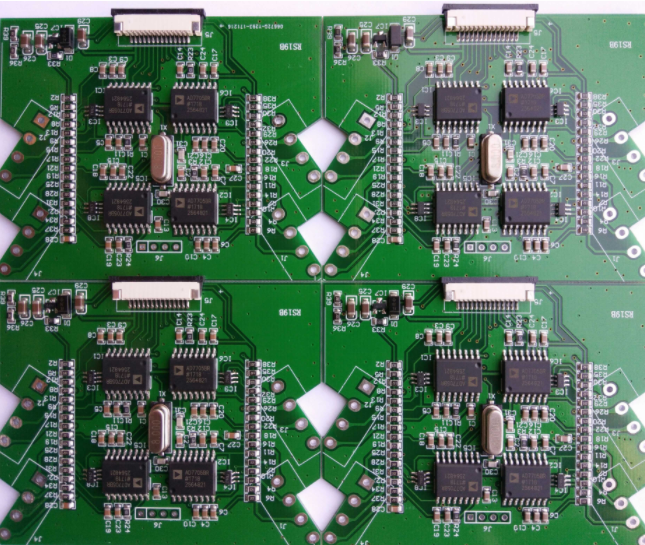In the entire production process of modern PCBs, ink has become one of the indispensable auxiliary materials in the PCB manufacturing process of PCB factories. It occupies a very important position in the PCB process materials. The success or failure of ink use directly affects the overall technical requirements and quality indicators of PCB shipments. For this reason, PCB manufacturers attach great importance to the performance of inks. In addition to the well-known ink viscosity, the thixotropy as an ink is often overlooked by people. But it plays a very important role in the effect of screen printing.
Below we analyze and explore the influence of thixotropy in the PCB system on the ink performance:
1. Screen
Silk screen is one of the indispensable materials in the screen printing process. Without screen, it cannot be called screen printing. Screen printing is the soul of screen printing technology. The screens are almost all silk fabrics (of course there are also non-silk fabrics).
In the PCB industry, the most commonly used is the t-type net. s and hd type networks are generally not used except for individual special needs.
2. Ink
Refers to the colored gelatinous substance used for printed boards. It is often composed of synthetic resins, volatile solvents, oils and fillers, desiccants, pigments and diluents. Often called ink.

Three. Several important technical properties of PCB ink
Whether the quality of PCB ink is excellent, in principle, it is impossible to break away from the combination of the above major components. The excellent quality of the ink is a comprehensive manifestation of the scientificity, advancement and environmental protection of the formula. It is reflected in:
(1) Viscosity: short for dynamic viscosity. Generally expressed by viscosity, that is, the shear stress of fluid flow divided by the velocity gradient in the direction of the flow layer, the international unit is Pa/sec (pa.s) or milliPascal/sec (mpa.s). In PCB production, it refers to the fluidity of ink produced by external forces.
(2) Plasticity: After the ink is deformed by external force, it still retains its properties before deformation. The plasticity of the ink is conducive to improving the printing accuracy;
(3) Thixotropic: (thixotropic) The ink is gelatinous when it is left standing, and the viscosity changes when it is touched. It is also called thixotropic and sag resistance;
(4) Fluidity: (leveling) the extent to which the ink spreads around under the action of external force. Fluidity is the reciprocal of viscosity, and fluidity is related to the plasticity and thixotropy of the ink. The plasticity and thixotropy are large, the fluidity is large; the fluidity is large, the imprint is easy to expand. With low fluidity, it is prone to network formation, resulting in ink formation, which is also known as reticulation;
(5) Viscoelasticity: refers to the ability of the ink that is sheared and broken after the ink is scraped by the squeegee to rebound quickly. It is required that the ink deformation speed is fast and the ink rebounds quickly to be beneficial to printing;
(6) Dryness: the slower the drying of the ink on the screen, the better, and the faster the better after the ink is transferred to the substrate;
(7) Fineness: the size of pigment and solid material particles, PCB ink is generally less than 10μm, and the size of the fineness should be less than one-third of the mesh opening;
(8) Stringiness: When the ink is picked up with an ink shovel, the degree to which the silk-like ink does not break when stretched is called stringiness. The ink filament is long, and there are many filaments on the ink surface and the printing surface, making the substrate and the printing plate dirty, or even unable to print;
(9) Transparency and hiding power of ink: For PCB inks, various requirements are put forward for the transparency and hiding power of the ink according to different uses and requirements. Generally speaking, circuit inks, conductive inks and character inks all require high hiding power. The solder resist is more flexible.
(10) Chemical resistance of ink: PCB ink has strict standards for acid, alkali, salt and solvent according to different purposes;
(11) Physical resistance of the ink: PCB ink must meet external scratch resistance, heat shock resistance, mechanical peel resistance, and meet various strict electrical performance requirements;
(12) Safety and environmental protection of the ink: PCB ink is required to be low-toxic, odorless, safe and environmentally friendly.